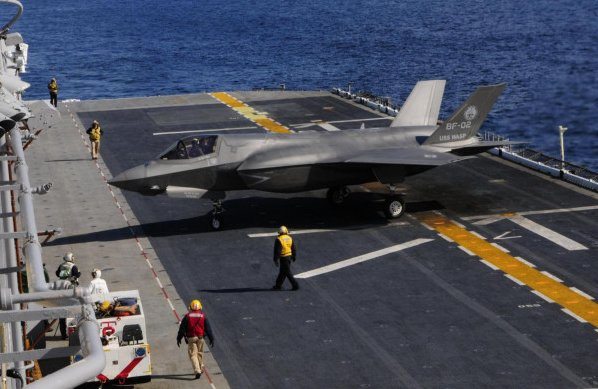Indications are that the F-35 joint strike fighter program — the most expensive aviation program in Defense Department history — is on track, the undersecretary of defense for acquisition, technology and logistics told a Senate panel here June 19.
Testifying before the Senate Appropriations Committee’s defense subcommittee this morning, Frank Kendall said the F-35 will be the premier strike aircraft for the Air Force, Navy and Marine Corps.
“The department’s and my focus has been on the efforts to control costs on the program, and to achieve a more stable design so that we could increase the production rate to more economical quantities,” Kendall told the senators. “Indications at this time are that these efforts are succeeding.”
The program, begun in President George W. Bush’s administration, is about 90 percent through the development program and 40 percent through flight testing.
Kendall said he anticipates being able to complete the development effort within the planned cost and schedule.
“However, we may need to make some adjustments as events unfold,” he added. “On the whole, however, the F-35 design today is much more stable than it was two or three years ago.”
Production of the aircraft was in real jeopardy in 2011 amid uncertainty in how design issues would be solved, the undersecretary said.
“The F-35 is one of the most concurrent programs I have ever seen, meaning that there is a high degree of overlap between the development phase and the production phase of the program,” he said.
Kendall said he believes those questions have been answered, and he told the committee he will review the program later this year to decide whether to increase the production rate significantly in 2015, as is currently planned.
“At this point, I am cautiously optimistic that we will be able to do so,” he said.
Costs per aircraft are coming down, Kendall said. “Since 2010, production costs have been stable and are coming down, … roughly consistent with our estimates,” he said. “We have been tightening the terms of production contracts.”
The aircraft builder, Lockheed-Martin, is required to share costs associated with design changes due to concurrency, and the Defense Department is negotiating the next two buys.
“In these lots, and all future lots, Lockheed will bear all of the risks of overruns,” Kendall said. “At this point we have a solid understanding of the production costs, and believe that they are under control.”
The undersecretary said he believes sustainment costs represent the greatest opportunity to reduce life cycle costs of the F-35 going forward.
“We are now focused on ways to introduce competition, and to take creative steps to lower those costs as well,” he said. “The bottom line is that since 2010, we have been making steady progress to complete development, stabilize the design, and control costs.”
Much remains to be done with the program, and surprises may still happen, Kendall acknowledged, but he added that he is “cautiously optimistic that we will be able to increase production to more economical rates beginning in 2015 as planned.”










